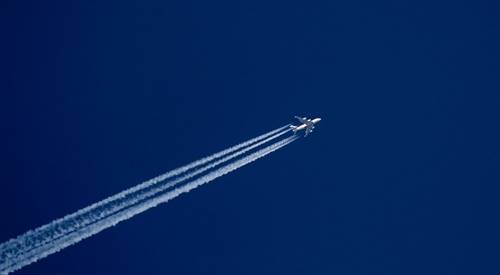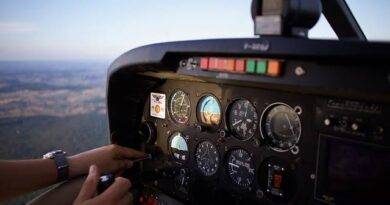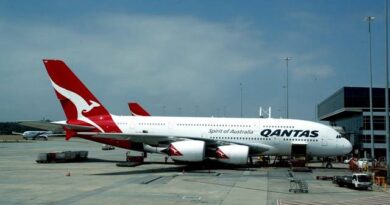Contrails: Unraveling the Mystery of Airplane White Trails
Ever gaze skyward and wonder about those wispy white lines trailing airplanes? Those, my friends, are contrails, short for “condensation trails,” and they’re not smoke or pollution. Buckle up, aviation buffs, as we debunk myths and unveil the science behind these fascinating clouds!
Contrails: Not Smoke, But Ice Crystals in Disguise
Contrary to popular belief, contrails aren’t harmful emissions. They’re simply clouds made of tiny ice crystals formed by a cool science experiment playing out high in the atmosphere.
The Recipe for a Contrail: Hot Exhaust Meets Frigid Air
- Fuel Combustion: Airplane engines burn fuel, releasing water vapor alongside other gases.
- Rapid Chill Zone: High altitudes boast bone-chilling temperatures. This sudden drop in temperature acts like a giant freezer, rapidly cooling the water vapor.
- Icy Transformation: Depending on the air’s temperature and humidity, the vapor condenses into water droplets or freezes into ice crystals, forming the visible contrail.
Not Every Plane Gets a Contrail Tail
Several factors determine if a plane leaves a contrail:
- Temperature: Colder air is more likely to trigger contrail formation.
- Humidity: Higher humidity leads to thicker, more visible contrails.
- Engine Efficiency: Newer, cleaner engines produce less water vapor, making contrails less frequent.
Contrails and the Environment: A Complex Cloud Story
While primarily water vapor, contrails raise questions about their potential impact:
- Climate Change: Some studies suggest contrails may trap heat, contributing to warming. However, research is ongoing, and the overall impact remains a complex topic.
- Cloud Cover: Contrails can sometimes seed the formation of natural clouds, potentially affecting weather patterns.

So, the next time you see a contrail:
- Remember, it’s a natural phenomenon, not pollution.
- Not all planes leave contrails, and the conditions for their formation vary.
- The environmental impact of contrails is a complex topic with ongoing research.
Keep looking up, stay curious, and enjoy the ever-changing sky canvas, contrails and all!
References and Further Reading:
- Schumann, U., et al. (2012). “Impact of cntrails on climate: On recent approaches and limitations of modeling.” Atmos. Chem. Phys. 12: 5073-5093. https://www.sciencedirect.com/science/article/pii/S1631070505000563
- Penner, J. E., et al. (2005). “Clouds and climate change: International geosphere-biosphere programme report 58.” International Geosphere-Biosphere Programme. https://ntrs.nasa.gov/api/citations/19860011521/downloads/19860011521.pdf
- Ström, D. P., et al. (2010). “Global-model simulations of the impact of cntrails on upper-tropospheric clouds under various global warming scenarios.” Atmos. Chem. Phys. 10: 1559-1569. https://agupubs.onlinelibrary.wiley.com/doi/full/10.1029/2001JD000429
- European Union Aviation Safety Agency (EASA): https://www.eurocockpit.be/positions-publications/contrails-european-pilots-views-and-recommendations
- National Aeronautics and Space Administration (NASA): https://www.earthdata.nasa.gov/learn/sensing-our-planet/on-the-trail-of-contrails
- International Civil Aviation Organization (ICAO): https://www.icao.int/Meetings/EGAP/Presentations/E-GAP_Session%20I_David%20Fahey.Aviation%20Climate.final.pdf
For more articles click.


